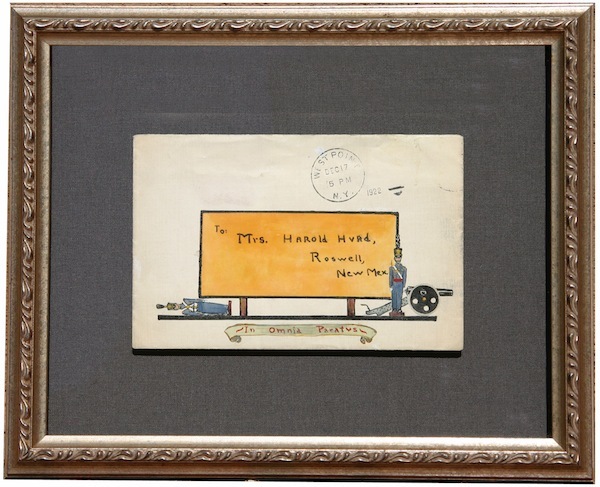Peter Hurd: 1904–1984
About Peter Hurd
Peter Hurd left his birthplace of Roswell, New Mexico in 1921 after receiving a senatorial appointment to West Point. He left the academy after only two years to pursue a career not as a soldier but an artist. Peter sought out N.C. Wyeth in Chadds Ford, Pennsylvania and studied as his private pupil. Undaunted by Wyeth’s warning that studying under him would be much tougher than attending West Point, Peter accepted the challenge and studied alongside Wyeth and his children for ten years. All the Wyeths were quite taken by this handsome, energetic young man in cowboy boots and hat, but none so much as Wyeth’s eldest daughter, Henriette, who married Peter Hurd in 1929. After a decade on the east coast, Peter began to long for his independence and a return to the West. These desires ultimately led the couple, along with their growing family, to San Patricio, New Mexico where they would spend the rest of their lives. The landscape of New Mexico inspired Peter and it was here that he developed his true artistic style. Peter would become celebrated for egg temperas, watercolors and lithographs depicting the New Mexico way of life in the form of landscape and portraits. He delighted in creating a moment he knew would be soon to change. This rush against time not only challenged Peter, but also led to his creation of field sketches.
These sketches were done quickly with watercolor or pen and wash. It was often from his field sketches that Peter created his detailed temperas and watercolors. Despite his growing popularity as a regional artist, Peter’s adventurous spirit would take him all over the world. His first major excursion took place in the mid 1940’s, when Peter left home to serve as an illustrative war correspondent for LIFE Magazine. The resulting wartime works varied from field sketches to fully developed egg temperas and watercolors. Many of these war sketches now hang in the Pentagon. After the war, Peter traveled to North Africa, Asia and Saudi Arabia where Peter befriended, and painted, King Faisal. These locales made for intriguing works, however, none would bring Peter as much attention as when he was asked to paint President Johnson’s official portrait. The portrait was notoriously rejected by the president, which generated a great deal of media attention, making Peter Hurd a household name. From his humble beginnings as a Wyeth pupil, to his success as a southwest artist, Peter never lost his commitment to the canvas. Peter continued to be passionate about his painting career until his death in 1984 but his undying philosophy and legend still lives on to this day.





















